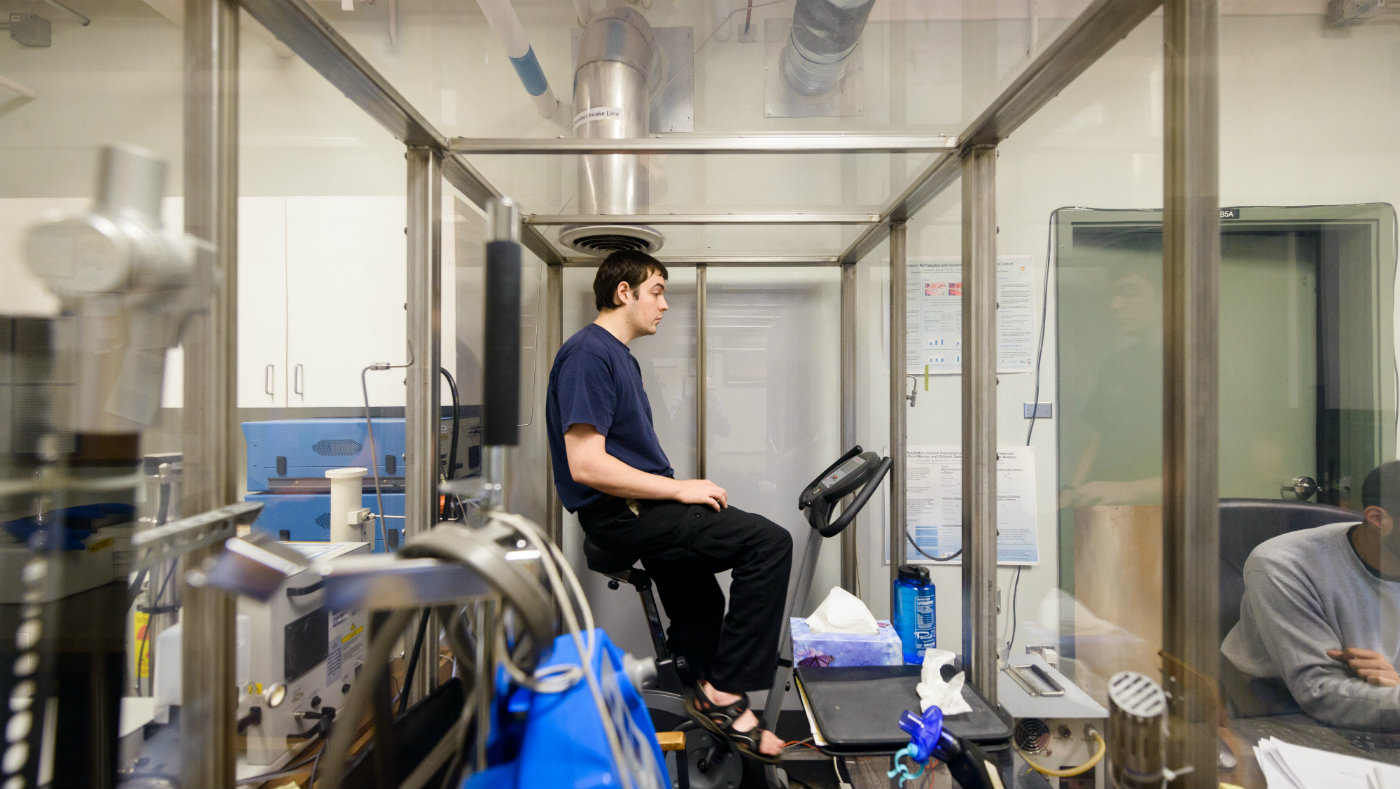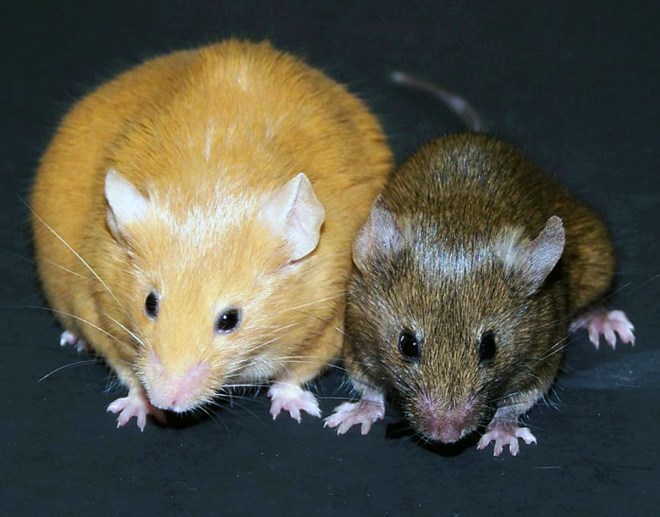Breathing nasty urban pollution does more than clog up your lungs — it actually messes with your genes. This disturbing news comes from a paper published last month, and could change the way we think about pollution.
The study’s author, University of British Columbia researcher Chris Carlsten, put volunteers in a walled-in smog aquarium, exposed them to levels of air pollution similar to those found in the world’s most polluted cities, and then looked for changes at the level of the human genome. (Science!)
Carlsten’s homemade pollution is technically just diesel exhaust — none of the nasty particulate matter that makes coal-burning countries’ smog especially deadly — but it’s plenty potent all the same, full of the kinds of volatile polycarbonates that we usually try to avoid. Study participants steep in them for two hours, riding a stationary bike for some of the time, but mostly just sitting and reading, using the internet, or twiddling their thumbs.
Two hours isn’t that long, especially when you consider that some people spend their lives in similar levels of pollution. “It’s a controlled human exposure,” Carlsten says, and participants are well-informed of the calculated risks involved. It’s not unlike spending two hours in Beijing on a bad day — unpleasant, perhaps, but ultimately safe.
Carlsten’s lab takes blood samples from participants, first after they spend two hours in the smog booth breathing filtered air, and then again after they are dosed with diesel. “Essentially, each person serves as their own control,” Carlsten explains, “because everything about them is unchanged before and after the exposure.”
So while the DNA in each paired sample is identical, Carlsten’s study found that the DNA methylation patterns — the layer of methyl molecules over DNA, that act as light switches turning genes on or off — are changed after the volunteers get the smog treatment.
The factors that determine how your genome is actually translated into your flesh-and-blood are together known as your “epigenome.” Scientists are just beginning to realize how much of our biology is determined by changes in our epigenetics — we may even inherit some epigenetic qualities from our parents, along with the genetic basics like eye color and that funny-shaped nose. Over the past few years, studies have looked at the epigenetic effects of diet, of chronic stress, of sleep, and found again and again that our genes are not destiny; our environment still has a remarkable power to change us at a fundamental level.
Perhaps the most famous of these epigenetic studies involved agouti mice, which sport a gene that makes them especially prone to obesity, cancer, and diabetes. If a mother agouti mouse is fed a diet rich in methyl donors, the offspring are likely to turn out svelte and healthy, studies have shown. While the thinner mice still carried the problem agouti gene, it is more likely to be deactivated with the extra methyl molecules present; meanwhile, their unhappy un-methylated mouse relatives swell up like fuzzy yellow balloons. Maybe you’ve seen the family photos?
Epigenetic research has deep implications for communities where the environment is anything but moderate or nurturing. In places where poor diet, exposure to toxic substances, and high stress are systematic and unyielding, the troubled legacy of growing up there may be more than symbolic — it could be passed from parents to offspring, an environmental legacy that could last generations after the exposure has ended. For humans, this might mean higher rates of cancer and asthma, poorer performance in schools, and higher costs of healthcare for people whose grandparents grew up undernourished, overstressed, and exposed to high levels of pollution.
Carlsten is quick not to overstate the results of his own study. While the changes he found were striking, they were not large enough to cause any biological changes on their own, he says. And to truly know the long-term effects of exposure to any kind of pollution, there is no replacement for looking directly at the health of the people exposed to it over the course of their lives. This kind of work is slow, statistical, and hard to control, but it can tell us about how environment shapes us in the real world.
Carlsten’s research does give us a peek into some of the processes that may be at work during long-term exposure, however. And while his results were subtle, they were still significant — roughly 400 of the 50,000 genes that his study examined were methylated differently after exposure to the diesel fumes. It may seem like a small number, but remember, that was after just two hours in the smog chamber. “If that were to occur chronically over years, that could have some serious accumulated biological effects,” Carlsten says.
The next step, for Carlsten and other scientists, will be to look more closely at those genes, see if their activity or inactivity is linked to any known disease — and then, if air pollution is to blame, to clean up our acts accordingly.
“The key is to be able to intervene,” Carlsten says. “That’s the whole point of public health-oriented science: intervention and prevention. Yeah, the science is cool and all that, but we really want to understand something that we can change.”




